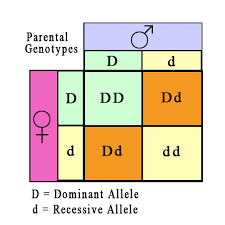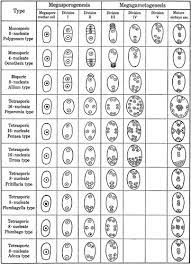Coupling and Repulsion - definition and experimental proof
Coupling and Repulsion
Coupling:
The tendency of two dominant alleles or recessive alleles coming from the same parent tend to enter the same gamete and Coupling inherit together is called coupling.
Experimental Proof for Coupling:
W. Bateson and RC. Punnet in 1906 reported the phenomenon of
coupling and repulsion (linkage) in sweet peas. A sweet pea with blue flower
(B) and long pollen grains (L) is crossed with one having red flower (b) and
round pollen grains (l). In this experiment, the blue colour B is dominant over
red colour b and the long pollen L is dominant over pollen I grains. So all the
F, offspring has blue flowers and long pollen grains. When they are test
crossed (a heterozygous blue long (BbLI) with recessive parent (bbll) offspring
appear in the ratio 7:1:1:7 instead of normal back cross ratio 1:1:1:1.
The above result reveals that, in the progeny generation;
the original parental phenotypes (blue long and red round) are dominating the
ratio. They explained that genes which come from the same parent tend to enter
the same gamete and are transmitted together. The dominant genes (B and L) of
dominant parent pass together to the same gamete. Similarly the recessive genes
(b and I) of recessive parent pass together to the same gamete. The gametes
with the genotypes BL and bl were produced in large numbers. Hence the blue
long and red round plants were produced in large numbers.
Repulsion:
The tendency of two dominant alleles or recessive alleles
coming from two parents tend to separate each other and enters different
gametes is called repulsion.
Experimental Proof for Repulsion:
Bateson and Punnet crossed a sweet pea bearing blue flower and round pollen grains (BBll) with another pea plant bearing red flower and long pollen grains. (bbLL). The F1 hybrids were blue long (BbLI). They were back crossed with recessive parent (bbll). The back cross ratio was 1:7:7:1 instead of normal 1:1:1:1 ratio. Here the two dominant alleles (B and Z) or recessive alleles (b and repelled each other because they came from different parents. The gametes with genotypes Bl or bL were formed in more numbers, Hence the blue round and red long plants were produced in more numbers.




Comments